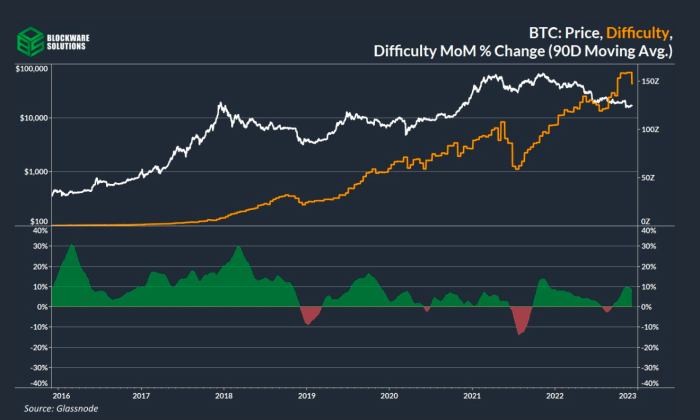The Ultimate Guide to the Best Bitcoin Savings Strategy (2025) for Secure Growth
In todayâs rapidly evolving cryptocurrency landscape, developing a solid bitcoin savings strategy is essential for long-term financial growth. Whether you’re a seasoned investor or just starting, understanding how to save and grow your bitcoin holdings securely can make all the difference in 2025. This comprehensive guide explores the most effective tactics, tools, and best practices to help you implement a robust bitcoin savings strategy that withstands market volatility and maximizes returns.
Table of Contents
- 1. Automated Dollar-Cost Averaging (DCA) Investments
- 2. Secure Hardware Wallet Storage Options
- 3. Diversification Across Different Exchanges
- 4. Regular Portfolio Rebalancing Strategies
- 5. Utilizing Staking and Yield Earning Opportunities
- 6. Educating Yourself on Market Trends and Data
- 7. Setting Clear Financial Goals and Tracking Progress
- 8. Tax Optimization and Legal Compliance
- 9. Building a Community and Networking with Experts
1. Automated Dollar-Cost Averaging (DCA) Investments
Understanding DCA and Its Benefits
Dollar-cost averaging is a tried-and-true method for investing in bitcoin without succumbing to emotional decision-making. By investing a fixed amount of money at regular intervals, you mitigate the risk of market timing mistakes. In 2025, automated DCA tools have become more sophisticated, allowing investors to set and forget their purchases, ensuring discipline and consistency.
Since bitcoin’s price can be volatile, DCA helps smooth out the entry points, reducing the impact of short-term fluctuations. This strategy is particularly effective in a market characterized by sudden surges or dips, as it buys more bitcoin during dips and less during peaks. Over time, this leads to a more favorable average purchase price and a resilient savings strategy.
Implementing Automated DCA Platforms
Today, numerous platforms like Coinbase, Binance, and dedicated services such as Swan Bitcoin offer automated DCA features. These allow you to schedule weekly or monthly purchases seamlessly, often with low or zero fees. Automation ensures your savings plan remains consistent regardless of market movements or personal distractions.
To maximize your bitcoin savings strategy in 2025, choose a platform that offers secure transfers, transparent fee structures, and reliable customer support. Consider setting alerts to review your investment periodically, ensuring your DCA aligns with your long-term goals.
2. Secure Hardware Wallet Storage Options
The Importance of Cold Storage
Security remains the cornerstone of any effective bitcoin savings strategy. Storing your bitcoin in a hardware wallet, often called cold storage, significantly reduces exposure to hacking risks. In 2025, hardware wallets like Ledger Nano X or Trezor Model T have become standard tools for safeguarding your assets.
Cold storage keeps your private keys offline, which prevents online attacks. It’s recommended to transfer your savings in bulk once you accumulate a sizable amount, then disconnect the wallet from the internet. This approach provides peace of mind and protects your investment for the long term.
Best Practices for Hardware Wallet Security
Always purchase hardware wallets directly from official sources to avoid counterfeit devices. Setting up your device with a strong, unique PIN and seed phrase enhances security. Store your seed phrase in a secure, offline location such as a safe or safety deposit box, never digitally or online.
Implement multi-factor authentication where possible, and regularly update your hardware wallet firmware. These steps ensure your bitcoin savings strategy remains robust against potential threats in 2025.
3. Diversification Across Different Exchanges
Reducing Counterparty Risks
Relying on a single exchange for your bitcoin storage can pose risks, such as exchange hacks or insolvency. Diversifying holdings across multiple reputable platforms mitigates this risk, ensuring your savings are protected even if one exchange faces issues.
In 2025, itâs common for investors to split their assets among tier-one exchanges like Coinbase, Kraken, and Binance, using secure withdrawal methods to store portions in hardware wallets. This diversification enhances your bitcoin savings strategy by balancing access and security.
Choosing Reliable Cryptocurrency Exchanges
Look for exchanges with a solid track record, insurance policies, and robust security measures. Verify their regulatory compliance and user reviews before entrusting them with your assets. Having a structured plan to transfer assets between exchanges as needed can help optimize security and liquidity.
4. Regular Portfolio Rebalancing Strategies
Why Rebalance Your Bitcoin Portfolio?
Market volatility makes it crucial to periodically review your holdings and rebalance your portfolio. For a bitcoin savings strategy, rebalancing ensures that your asset allocation aligns with your risk tolerance and financial goals.
In 2025, many investors adopt quarterly or bi-annual rebalancing to take advantage of price swings without overtrading. This disciplined approach can lock in profits and prevent overexposure during market downturns.
Tools and Techniques for Rebalancing
Utilize portfolio management tools like CryptoCompare or CoinTracker that provide automatic alerts and suggestions. Setting predefined thresholdsâsay, rebalancing when bitcoin exceeds 50% of your portfolioâhelps automate decisions and maintain your desired risk profile.
5. Utilizing Staking and Yield Earning Opportunities
Maximizing Returns through Staking
In 2025, DeFi platforms and earning protocols have become increasingly popular for generating passive income from bitcoin and crypto assets. Staking bitcoin-compatible tokens or lending to decentralized platforms can add a new layer to your bitcoin savings strategy.
Discipline and careful platform selection are essential. Always evaluate security features, user reviews, and legal compliance before committing your assets to any yield-generating service.
Risks and Rewards
While these opportunities offer attractive yieldsâsometimes between 4-8% annuallyâthey also come with inherent risks, including smart contract vulnerabilities and platform insolvencies. Diversify your yield strategies and avoid overcommitting to risky projects.
6. Educating Yourself on Market Trends and Data
Keeping Up-to-Date in 2025
Continuous education is vital for an effective bitcoin savings strategy. Following reputable industry news, analyst reports, and data dashboards enables you to anticipate market movements and adjust your plan accordingly.
Leverage tools like Glassnode, CoinGecko, and CryptoQuant to analyze on-chain metrics, sentiment indicators, and macroeconomic trends. Knowledge empowers you to make informed decisions rather than reactive ones.
Utilizing Reliable Resources
Participate in online communities, attend webinars, and read expert publications. In 2025, staying well-informed can be the difference between a thriving savings strategy and missed opportunities.
7. Setting Clear Financial Goals and Tracking Progress
Defining Your Savings Objectives
Whether you aim to accumulate a certain amount of bitcoin for retirement or to fund a major purchase, setting specific, measurable targets is fundamental. Creating milestones helps maintain focus and motivation over time.
Document your goals in a journal or digital tracker, noting the amount of bitcoin or fiat equivalent you wish to accumulate within specific timeframes. This clarity guides your savings strategy effectively.
Monitoring Tools and Techniques
Regularly review your portfolio using apps like Delta or Blockfolio. Analyze your progress quarterly and adjust contributions if needed. Remember, flexibility can enhance your overall bitcoin savings strategy in 2025.
8. Tax Optimization and Legal Compliance
Understanding Cryptocurrency Tax Laws in 2025
Tax regulations evolve quickly, and staying compliant ensures your bitcoin savings strategy remains sustainable. In 2025, many countries have clarified rules around crypto gains, but nuances remainâconsulting with a tax professional is recommended.
Proper recordkeeping of all transactions, including buys, sells, and transfers, simplifies tax reporting and reduces liability. Using compliant tax software can streamline this process.
Strategies for Tax Efficiency
Implement tax-loss harvesting, hold investments long-term to benefit from lower capital gains tax rates, and consider utilizing tax-advantaged accounts where applicable. These practices can help maximize net growth of your bitcoin holdings.
9. Building a Community and Networking with Experts
The Power of Community Support
Joining crypto communities on platforms like Reddit, Telegram, and Discord provides valuable insights and real-world experiences. Sharing knowledge can help refine your bitcoin savings strategy in 2025 and avoid common pitfalls.
Networking with industry experts and attending conferences fosters relationships that might open up investment opportunities or collaborations, further enhancing your financial growth.
Learning from Experts and Influencers
Follow reputable crypto analysts, read interviews, and participate in webinars to stay at the forefront of market developments. Their insights can provide real-time guidance and inspiration for maintaining a resilient bitcoin savings strategy.
Frequently Asked Questions about Bitcoin Savings Strategy in 2025
1. What is the most effective bitcoin savings strategy in 2025?
The most effective bitcoin savings strategy in 2025 combines dollar-cost averaging with secure cold storage, diversification, and regular rebalancing, all while staying informed on market trends and utilizing yield opportunities responsibly.
2. How can I secure my bitcoin holdings?
Using hardware wallets for cold storage, practicing secure seed phrase management, and diversifying across trusted exchanges are key measures to protect your bitcoin holdings effectively.
3. Is staking bitcoin possible, and is it profitable?
While Bitcoin itself doesn’t support staking, many related tokens and protocols allow staking and yield farming, which can add passive income to your bitcoin savings strategy. Always assess the associated risks carefully.
4. How do I minimize taxes on my crypto gains in 2025?
Maintain detailed records of all transactions, utilize tax-advantaged accounts where possible, and consider strategies like long-term holding and tax-loss harvesting to optimize tax outcomes.
5. Why is a diversified approach important in a bitcoin savings strategy?
Diversification minimizes risks associated with hacks, exchange failures, and market volatility. Spreading assets across various platforms and storage options increases your savingsâ security.
Conclusion
Crafting the best bitcoin savings strategy in 2025 requires a thoughtful combination of disciplined investing, security measures, ongoing education, and strategic planning. By implementing the tactics outlined in this guideâfrom automated DCA investments to secure hardware storageâyou can position yourself for secure growth and long-term success in the evolving crypto world. Remember, adaptability and continuous learning are crucial to staying ahead in the dynamic landscape of bitcoin investing. Start today, stay informed, and watch your savings grow confidently in 2025!
Related Content
- Ether futures ETFs launching, SBF trial to begin and 3AC’s Su Zhu arrested: Hodler’s Digest, Sept. 24-30
- Bitcoin trader reveals ‘important’ BTC price zone as bulls hold $29.3K
- 10 Effective Crypto Portfolio Strategies You Need in 2025
- Bitcoin gets $28K ‘plunge protection’ with BTC price due new volatility
- FTX’s $3.4B crypto liquidation: What it means for crypto markets


